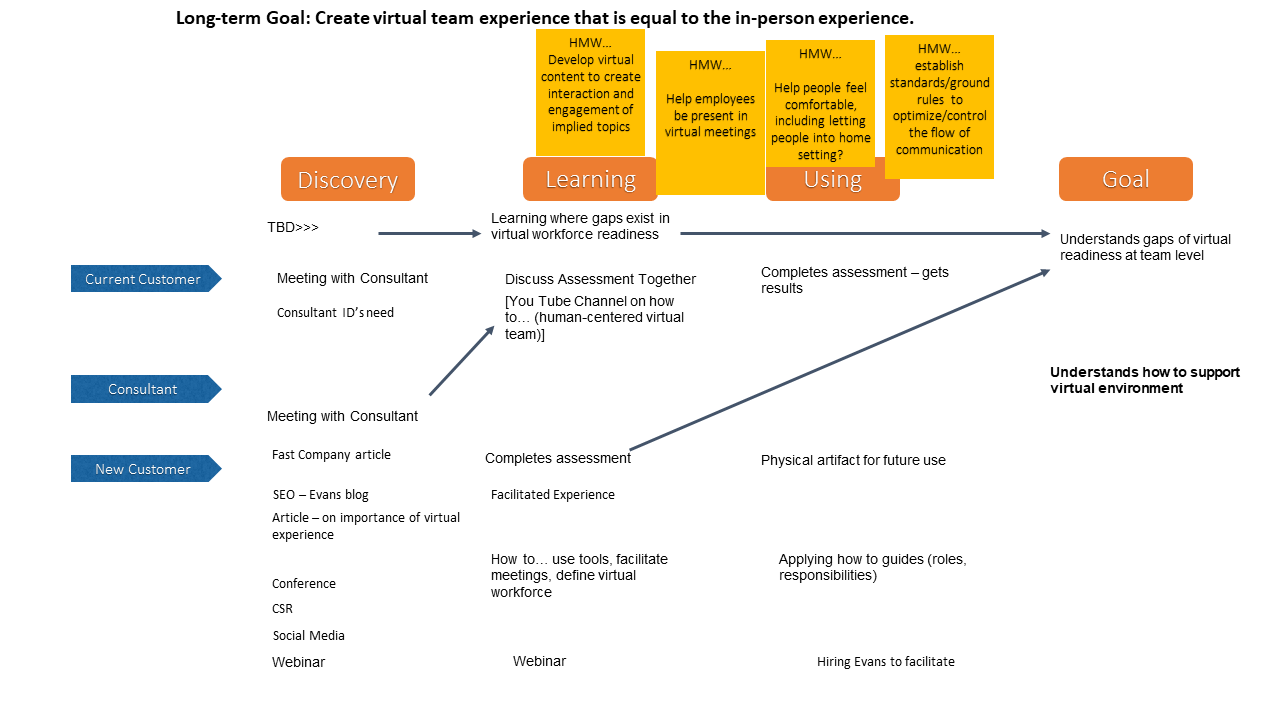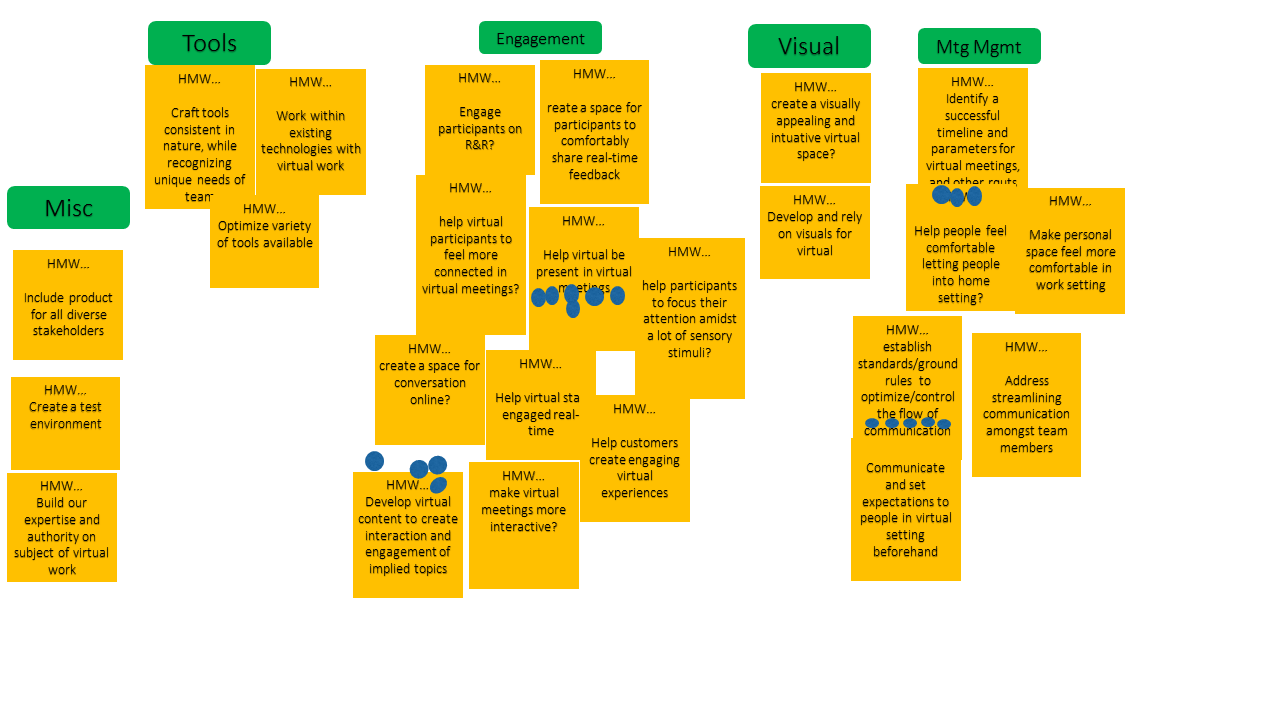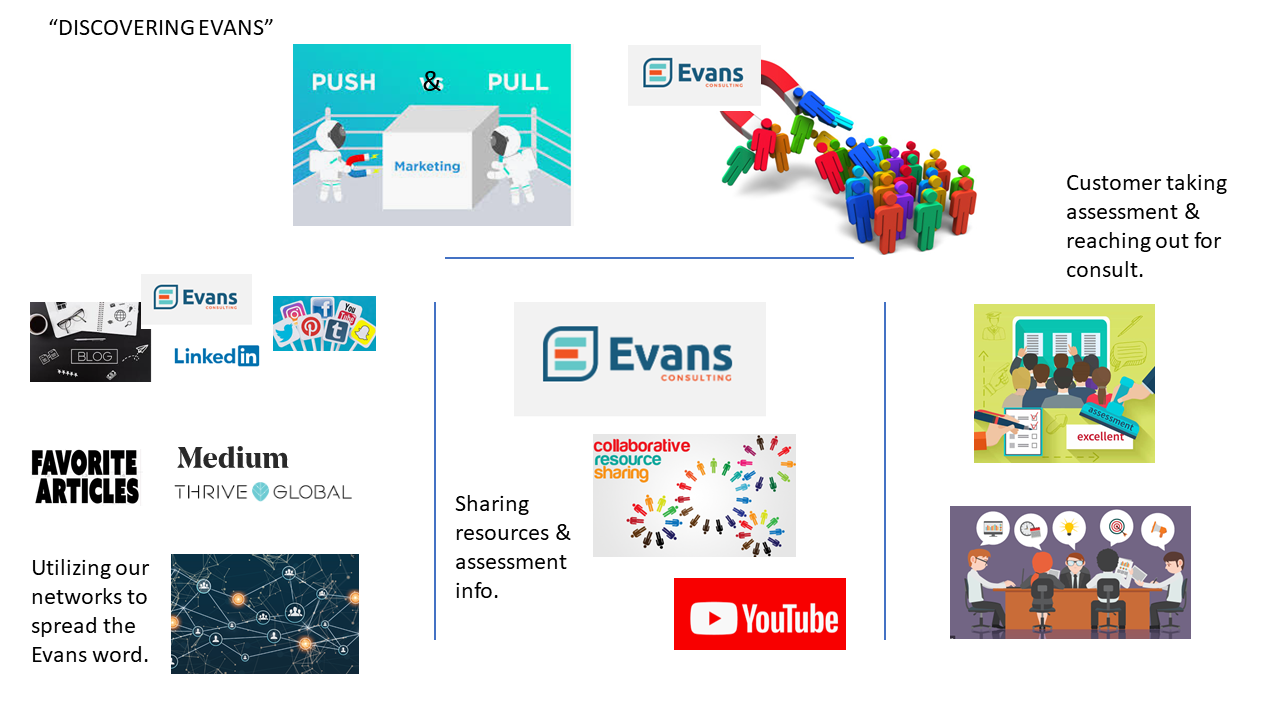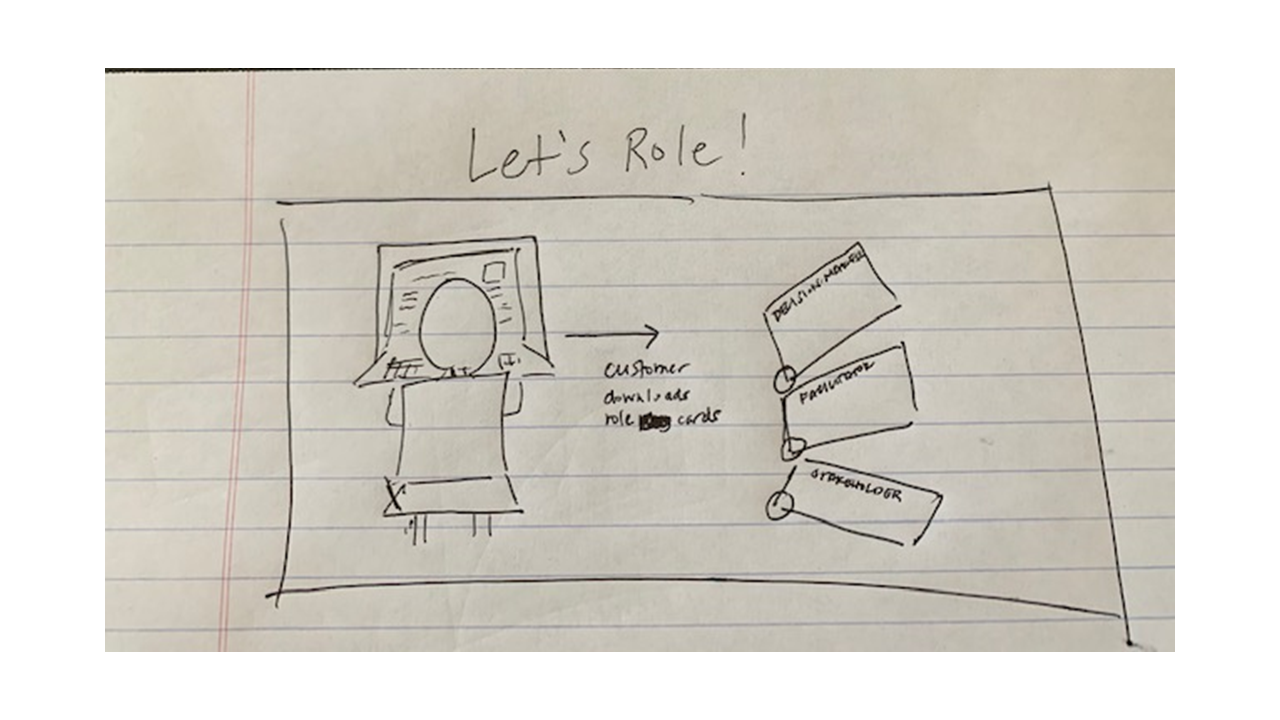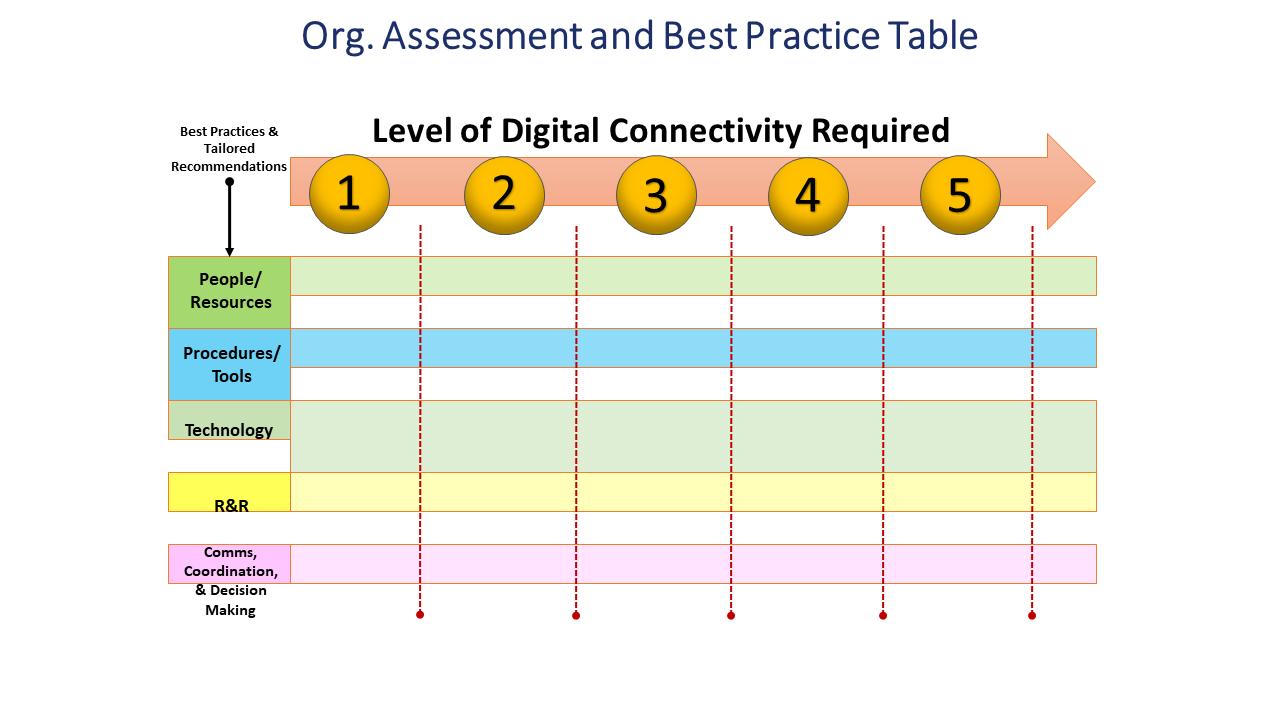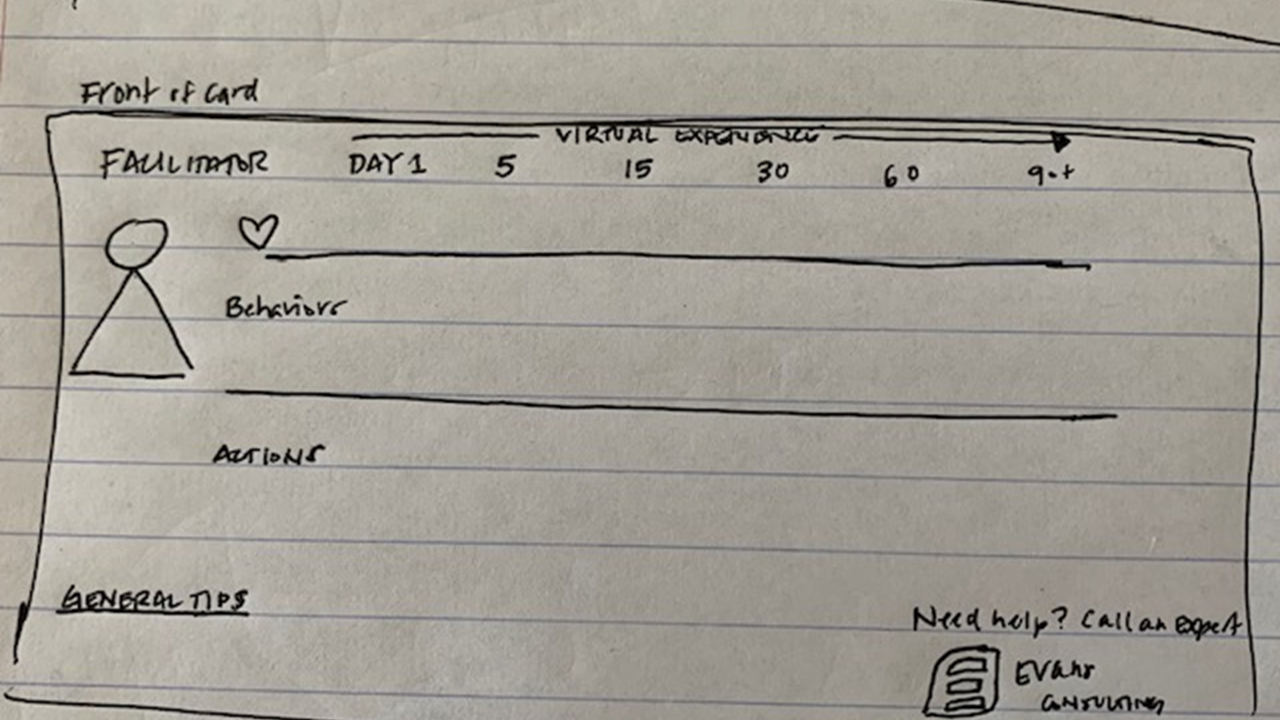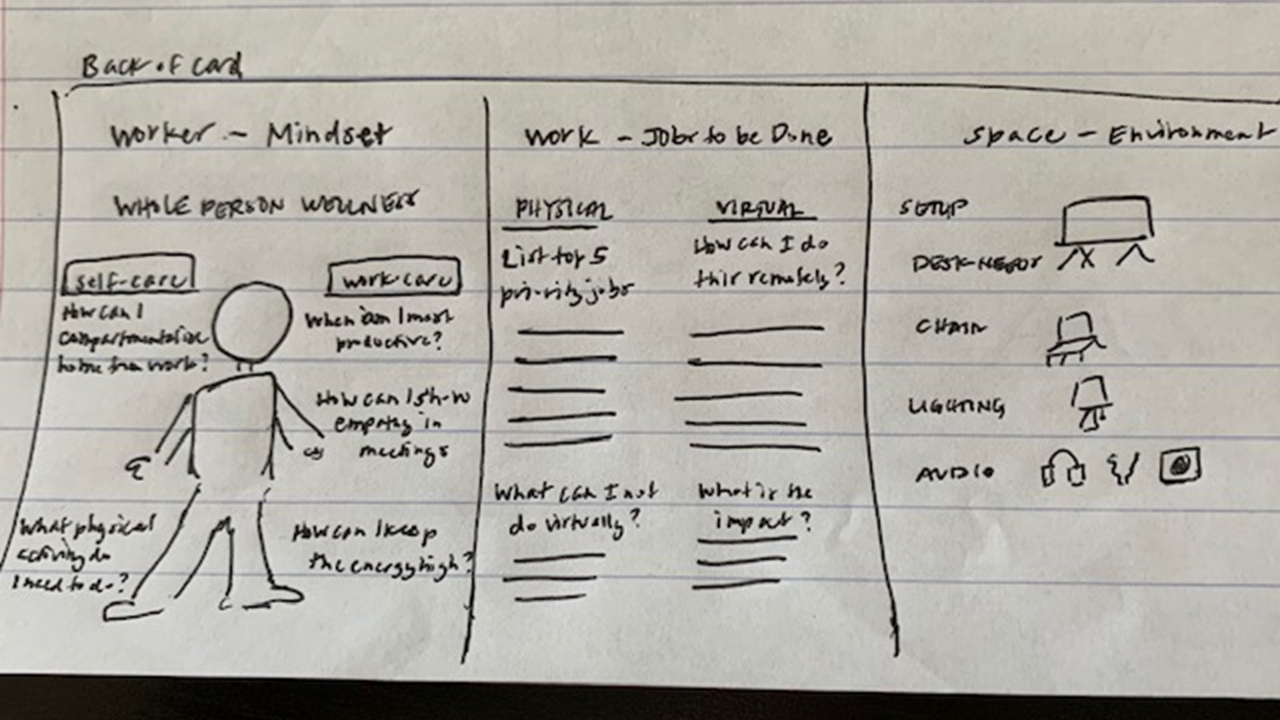Solution for Meeting Engagement at Evans COnsulting
Summer 2020 worked with Evans Consulting, a consulting firm that leads transformative change for clients including government agencies, nonprofits, and private sector companies during a 5 day Human-centered design sprint. The main purpose of the design sprint was to address the new challenge of online working for clients such as government agencies that are not as robust in technological tools, platforms, and skills.
DAY ONE: Define the Challenge
Brainstorm Questions to answer during the sprint:
What are the most helpful in-person activities?
What are different style elements for in-person meeting facilitation?
How can we assess the success rate of the product?
Do clients need help with virtual readiness?
Can we recreate the in-person experience, virtually?
We decided to focus on building the unique experience Evans Consulting provides its clients in-person, through a virtual experience because many of the clients struggled to transition into an online space due to the Covid-19 Pandemic.
We next created a journey map to understand the process of stakeholders when accomplishing the goal of creating a virtual team experience that is equal to the in-person experience.
Identified 3 steps to achieve our goal
Discovery
Learning
Using
Identified three stakeholders
Current customer
Consultant
New customer
The journey map process helps to organize the customer experience into key moments, which in the case of this map is discovery, learning, and using. By being able to visualize the entire experience in this way, as a designer we are able to detect gaps within the process to address or positive experiences to utilize.
DAY TWO: IDEAS ABOUND
Gathering the information we found during our mapping, the team dug deeper into what specific solutions Evans can provide its clients. Using the classic sticky note method (virtually) we managed to come up with over 20 smaller challenges to focus on because the problem Creating the in-person meeting experience in a virtual setting is too large to solve on its own. Breaking down this large goal into smaller challenges helps to see the true problem that needs to be addressed and helps make designing efficient and effective solutions less overwhelming.
During the brainstorming process, team members broke off into smaller groups to brainstorm as many “How Might We…” challenges as they could.
Next, came organizing the HMWs into themes. We came up with 4 themes Tools, Engagement, Visual, Meeting Management, and Misc.
Then, as a team, we voted on which HMW challenge we wanted to focus on. With 6 votes “Help virtual [members] be present in virtual meetings” was the winner.
DAY Three: Deciding solutions
Taking our now focused challenge, ‘help virtual members be present in virtual meetings’ the team began to brainstorm solutions for each stage of the goal process: Discovery, Learning, and Use. This time individual members were assigned one of the three stages and were asked to design a solution.
Discovery
An example of a discovery solution done by one of the team members. This solution describes how Evans can use their network to spread the Evans word through platforms like social media, Linkedin, and online articles. Evans can also share part of their resources and information on their website or on youtube to provide examples of their work. Lastly, Evans can use the old-fashioned cold call method, reaching out to clients to pitch their work.
Learning
This is an example designed by a teammate that shows how clients can discover our solution. The teammate took a best practices table already used by Evans and explains how Evans can incorporate it into the learning process of the new solution.
In this process, Evans will conduct an organizational assessment and tailor their solution recommendation based on this digital connectivity table. By encouraging clients to take this assessment it will help them see their strengths and weaknesses and in what specific areas Evans digital connectivity solution is needed. This form of learning will help clients better understand their need for the solution through seeing their own strengths and weaknesses.
Use
This example of a use solution shows a physical/digit artifact that clients can interact with. This ‘Let’s role” solution is over role cards to use during a virtual meeting. Within every meeting, there are different roles members play: the facilitator, the participant, and the delegate. Each role interacts within the group differently and may experience the virtual setting differently. For example, video lag can prevent the participant from performing the role of collaborating and communicating. These role cards, tailored to virtual meetings will help ease the pain points these roles face.
DAY Four: Prototyping
Taking the ‘Let’s Role’ solution, it was now time to build out a prototype. First, we expanded off our original concept and created low-fidelity prototypes. Then splitting up work between content creators and designers we created a high fidelity prototype to show clients.
DAY Five: Test and Learn
Backside to final prototype. I created this high-fidelity design to show clients.
After creating the final prototype it was time to test out our solution with actual clients. The interviewer observed 5 clients interacting with the prototype while taking notes, the interviewer asked questions about the thoughts and feelings that went with the client’s actions. The interviewer asked for recommendations on what could be improved upon and what was successful with the prototype. Through these usability tests, we learned that the “space-environment” section on the back of the card was redundant and that many found that information less insightful. The clients suggested we add in example dos and don’t for interactions during a virtual meeting. We took in this input and Evans is using it to inform the next interaction of design.

